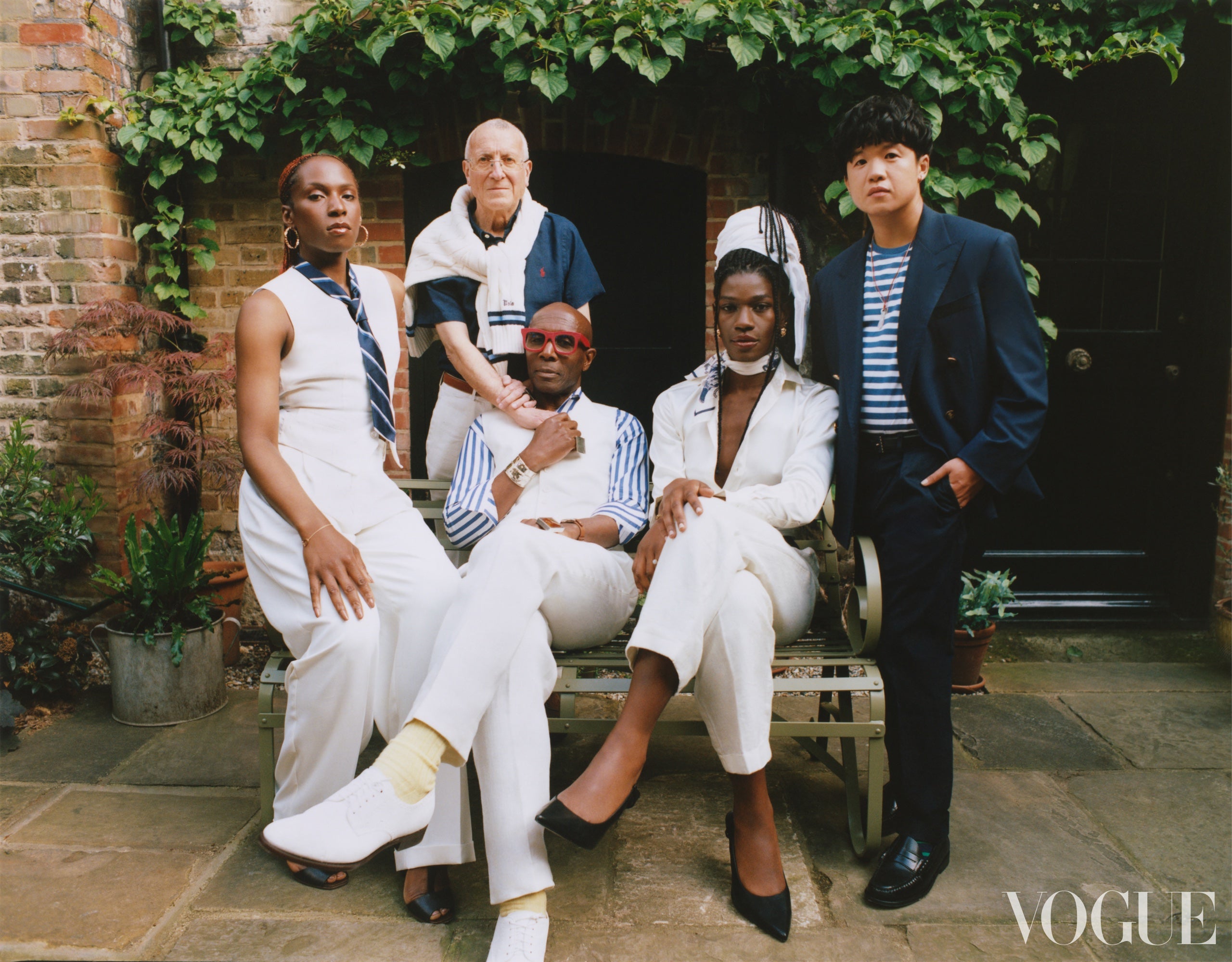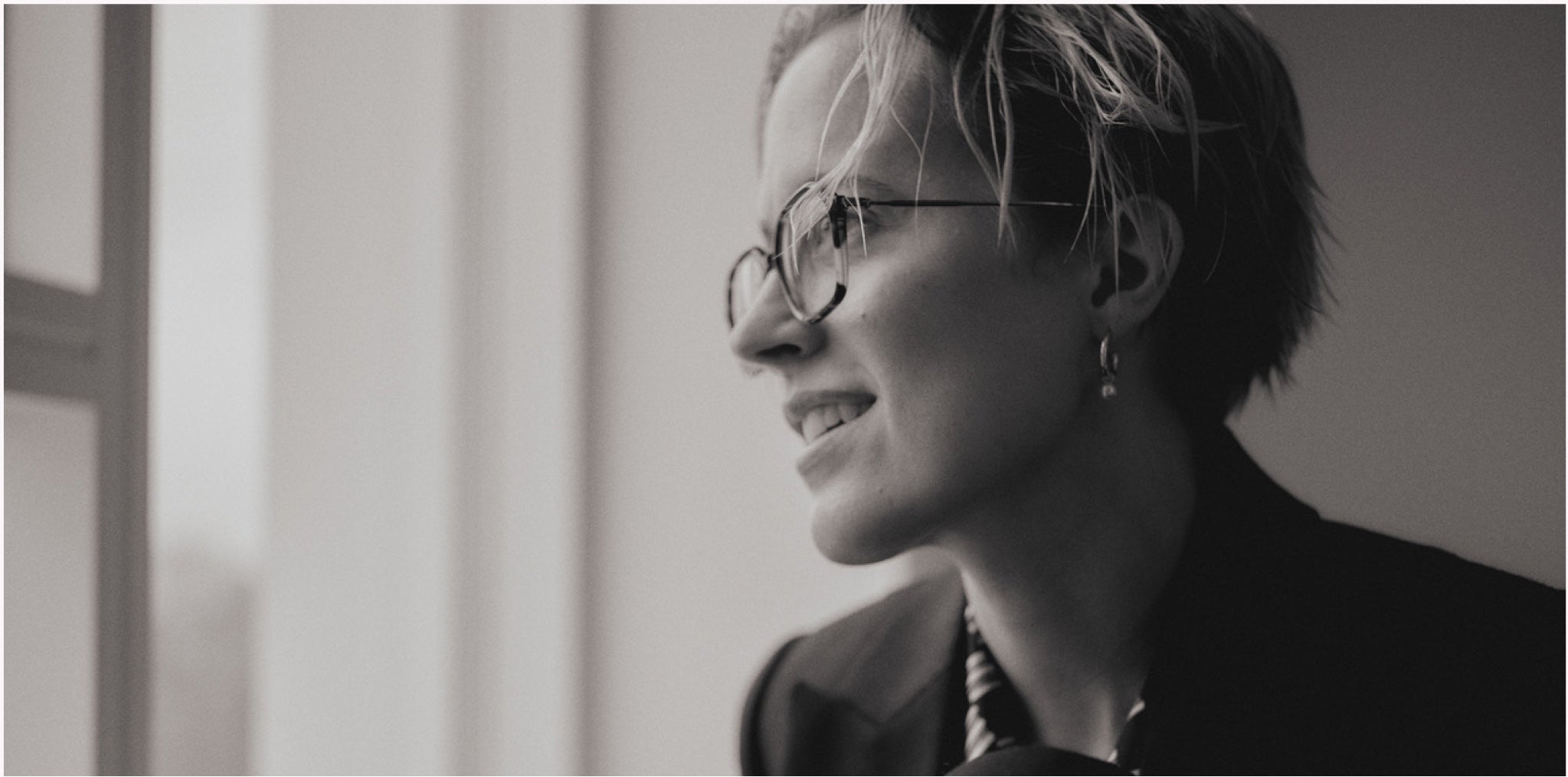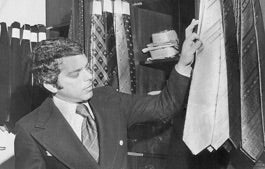
The RL Q+A: Charlotte Hadden
In conversation with the photographer behind our Pride 2023 campaignFor the latest chapter in the brand’s more-than-30-year history of supporting the LGBTQIA+ community, Ralph Lauren chose to celebrate Pride Month with “Celebrating Love Stories,” a campaign that pays homage to the many forms that love comes in. In collaboration British Vogue, the campaign features a diverse cast of members of the LGBTQIA+ community. June Lam, an actor/model who co-runs We Exist, artist Ebun Sodipo, poet Chloe Filani, photographer Robert Taylor, and biologist Tristram Wyatt were captured by London-based photographer Charlotte Hadden. Charlotte has shot for The New York Times, among a slew of other publications, in addition to launching Between, an ongoing photography series of portraits of trans youth.
We spoke with Charlotte from her girlfriend’s apartment about working with the cast, an artistic journey that began with a dented camera she received from her grandmother, and what it means to document London’s trans youth community.
The campaign looks amazing. What was the experience of working on this project like?
Working with the team at British Vogue and collaborating with Ralph Lauren was something I was really looking forward to. Ralph Lauren is such a classic brand, and I thought it was well-suited to my photography, which has more of a portraiture approach. Working with the people that we photographed was such a lovely day. It was a really wonderful experience—very relaxed and calm and everyone got along very well.
What about the idea of “Celebrating Love Stories,” do you feel most resonated with you?
What I liked about it was that it approached love in different ways. It wasn’t just talking about romantic love. I think we all go through different stages: love and friendship, love within ourselves, and also romantic love. I was very curious about the way to approach that.

How did you go about conveying those stories through your images?
Well, I think my work in general has a kind of intimacy to it, so I didn’t think too much, pre-shoot, about how I would convey it. It was more just: How could I capture that connection in-person? And just playing off of the cast, seeing what was happening, especially with the friends and the couple, to see how they interacted with each other. [I used] natural light as much as possible so it’s not intimidating. Having all this equipment around you, you just want to keep it low-key and casual. I think we managed it on the shoot.
What was it like working with the five cast members featured in the campaign?
It’s always interesting when you’re photographing someone because it’s a very exposed environment. But just witnessing how comfortably in love they are together, especially with Robert and Tristram, and how willing they were to share that with me, was quite special. You could tell June was quite nervous to begin with. It was lovely to see him open up throughout the shoot and become more confident in himself. And Chloe and Ebun, they were super-confident—they’ve done many shoots. So it was fun to photograph them and to capture their personalities, to see them joking around with each other constantly.

You’ve taken portraits of everyone from celebrities who have been photographed a lot to people who are rarely depicted in such beautiful portraits. How do you get your subjects to open up to you?
I just have a conversation with them. I think I’m quite calm as a person, so they mirror that sometimes. I create a safe space for them to be themselves because it can be quite an intimidating experience. It’s a slow process, and I try and keep it as intimate as possible. I don’t want them acting. If I’m suddenly putting on loud music, that’s me creating a space where they have to be a certain way—lively and bubbly and active. Which is totally fine, but I want to give them an opportunity to choose a part of themselves that they want to show.

Do you feel like being a photographer offers you a unique way to communicate with and connect to trans youth?
With my project Between, I photograph a very specific age range—youth who had just about reached puberty, and that’s a very tricky time, especially when you’re questioning your gender. And so what I notice when I photograph these young people is how open they are with me, and how willing they are to show themselves. How self-aware they are, how in tune with themselves they are.
These are things that get misrepresented about that community. But they’re the most self-aware kids I’ve ever met in my entire life. And the most empathetic. What I learned from that is that I’m there to document what they want me to document. I’m just there with a camera. It really has nothing to do with me.
Why is it important for you to document the experiences of the trans community?
[When I started the project five years ago] at that time in my career, I was working primarily as a fashion photographer. And I didn’t find it very fulfilling. I wanted to do more with my work to give a voice to those in communities who were struggling to have a voice. I began partnering with an organization called Mermaids, which helps gender-questioning children, and it went from there.
Let me ask about your personal journey as an artist. How did you first get interested in photography and why?
My grandmother was quite a keen photographer. And I was a very creative kid. She gave me a camera when I was about 15, and that’s when I first started showing an interest in photography. I only wanted to take pictures of people, so I just started taking portraits. When it came time to make a decision about whether I wanted to take it further, I had my photography teacher tell me to do photography, so it became quite a serious thing for me.
What was the camera that your grandmother gave you?
It was a Nikon Nikkormat, a 35-millimeter camera. It had a massive dent on the top of it, but it was still working.
How would you summarize what you’re looking to express through your work?
What I find really special is when I have people come up to me after I photograph them, once they’ve seen the pictures, and they say that they see themselves.
That’s fantastic.
I find that really special. Most people don’t like pictures of themselves, so if you can look at a picture of yourself and feel that you can see yourself and feel comfortable, I think that’s it for me. It’s such a compliment. In my work, that’s a hard, hard thing to do—and I couldn’t say how I do it.
In your view, does an artist have a responsibility to their community in any way?
It depends who you’re talking to. If I’m talking to an empathetic artist, I think it’s always helpful. Plus, it’s personal. So I feel like that’s always important to capture, even for yourself as an artist.

Do you feel that fairly or unfairly?
That’s a tricky one. I think as an artist you should feel that pressure. But me, I want things to feel personal. So it’s important for me, and I’m very happy to be part of the community, and to capture people.
How would you describe your personal style?
I have never been asked that question! Comfort is important to me. My style is quite minimal and has a playful element as well. I like classic pieces. I used to wear a lot of Polo as a kid, a lot of colorful Polo shirts, because my grandmother was obsessed—which I should probably get back into because they're very timeless.
What's next for you?
I want to continue with my Between project. I’d love to turn that into a book and an exhibition. I think that will be a project for life.

- Courtesy of Charlotte Hadden
- © Ralph Lauren Corporation






